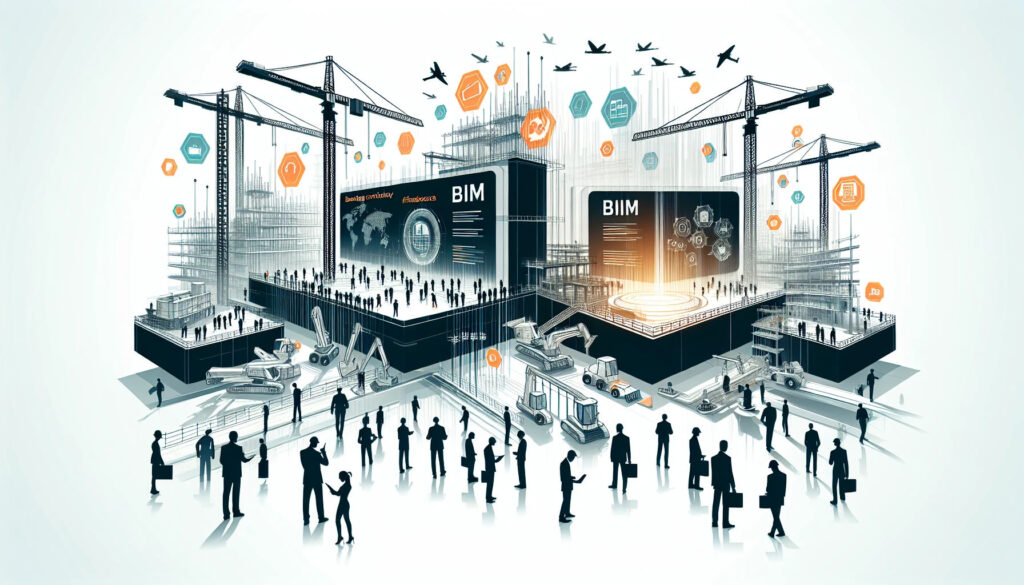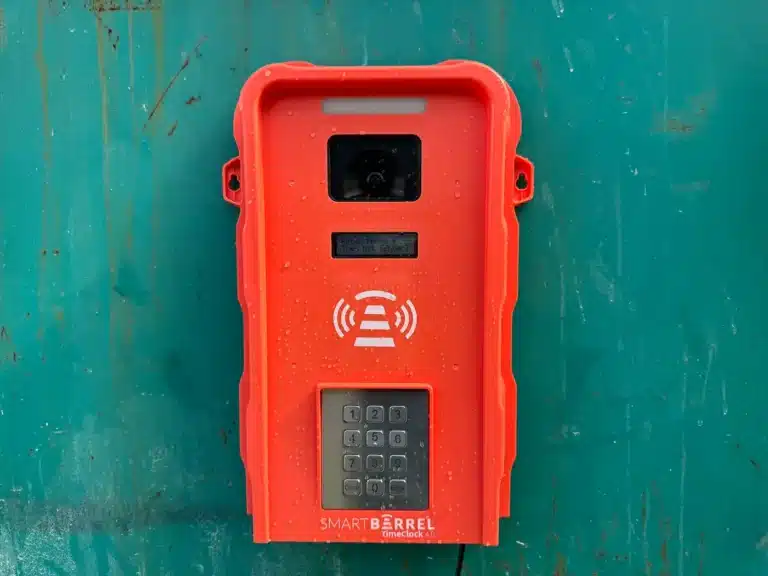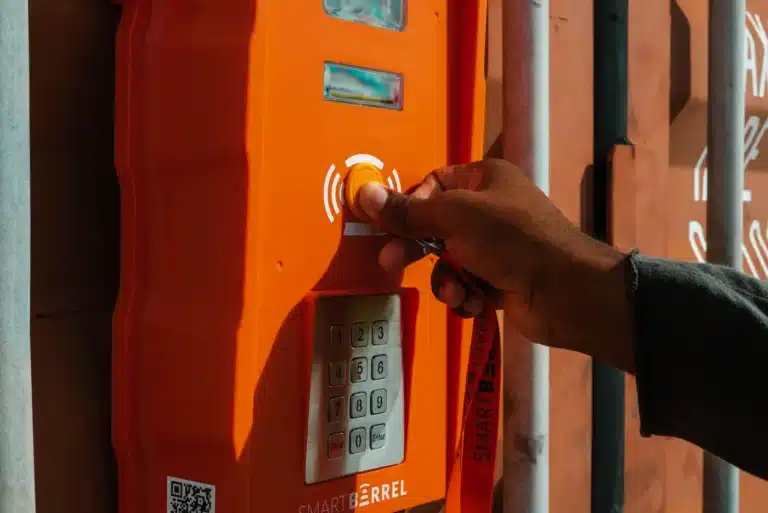In the world of construction management, bim and construction management isn’t just some trendy phrase—it’s a revolution. With over 67% of projects worldwide now powered by BIM, getting a grip on it is damn important for industry pros.
BIM, short for Building Information Modeling, is more than just software. Think of it as a process that digitally maps out a building’s traits, leading to smarter choices all the way from design to demolition. It’s a big deal for efficiency in the complex web of building stuff.
Ready to level up your game? This intro will shed some light on how bim and construction management smooths out the workflow kinks, boosts teamwork, and brings serious perks to the table. From making projects easier to picture to better cost predictions—BIM is changing the scene. We’re talking about:
Visualization and coordination are both at 49%, with as-built modeling (42%), constructability evaluation (41%), and cost estimation (40%) not far behind. Don’t even get me started on scheduling (4D) at 38%, site analysis (36%), code review (35%), facility management (34%), and sustainability evaluation (33%).
Peek at the stats if you don’t believe me. Surveys show that BIM’s shaking things up in design and construction, and it’s not just for kicks. Stick around, and you’ll get the lowdown on how BIM morphs every construction phase and why jumping on the bandwagon is a no-brainer to stay on top.
Understanding BIM’s Role in Construction Management
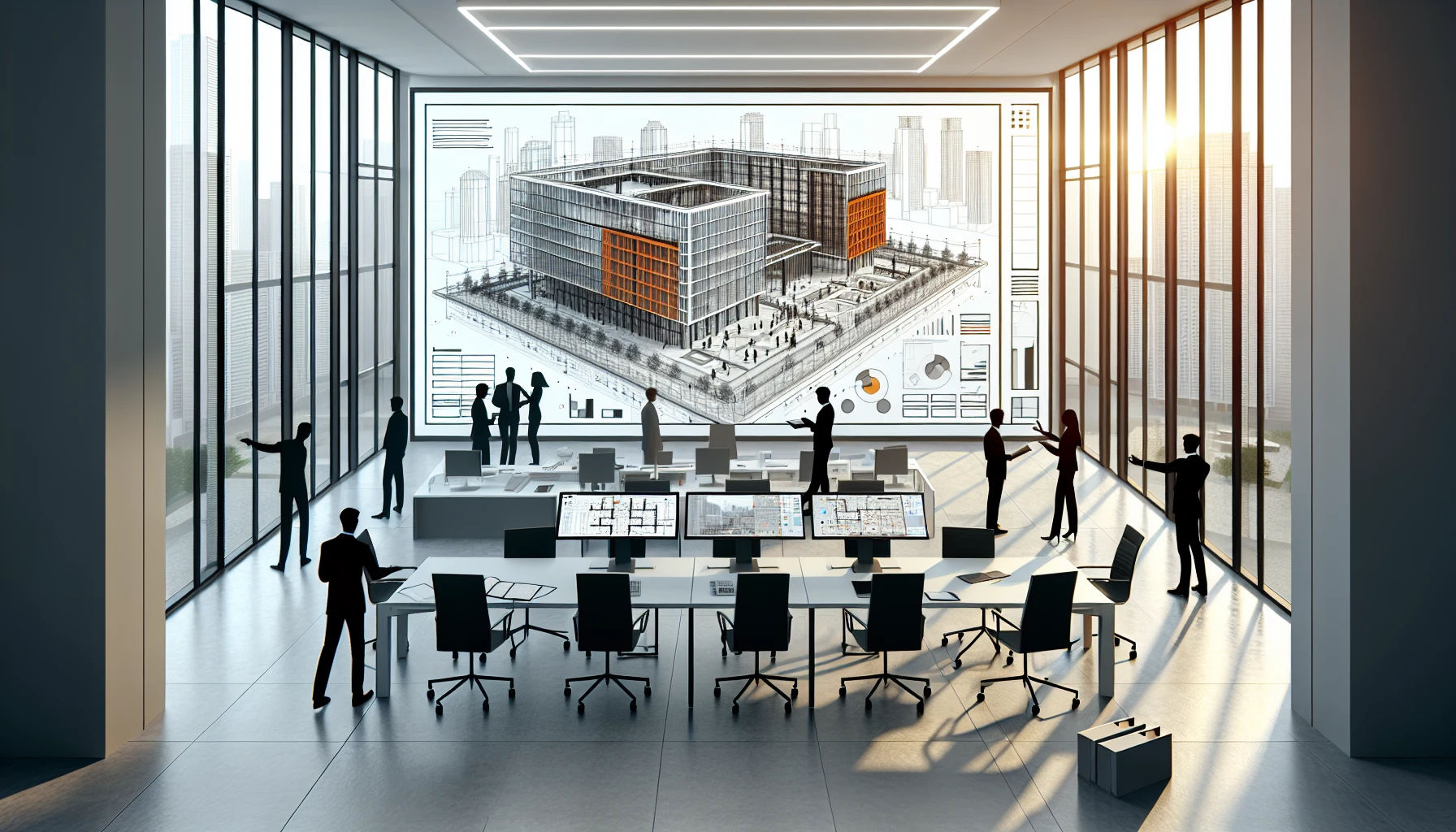
BIM has revolutionized construction management. It’s the dynamic duo with bim and construction management that streamlines projects from start to finish. Think of it as the secret sauce that makes everything in construction click.
Why is the use of bim in construction taking off? Simple. It’s all about collaboration. Before a single shovel hits the dirt, everyone involved gets a crystal-clear picture of the finished structure. This isn’t just some flashy tech—it’s about nailing efficiency, nixing errors, and cutting costs.
What is BIM?
BIM, short for Building Information Modeling, isn’t just about pretty pictures. It’s a comprehensive process that arms the pros with the smarts to manage projects like a boss. Here’s the scoop:
- It’s a digital twin of the building, showing both what it’ll look like and how it’ll work.
- It’s a single source of truth for all info about the place, throughout its whole life cycle.
- It backs up decision-making from the get-go, all the way to the ribbon-cutting and beyond.
BIM kicks old-school communication and choppy planning to the curb. It’s a game where everyone’s a team player, and good info calls the shots.
BIM’s Evolution and Current Trends
Once just a spark of an idea among the building buffs, BIM has grown up big time. It’s now all about cloud power, real-time teamwork, and savvy data crunching.
The bim and construction management scene in 2023 is all about the tools that get the job done smoother, smarter, and safer. With tech like SmartBarrel’s biometric time clocks, managing the crew on-site is a breeze, not a sales pitch. And let’s talk safety—27% of architects and GC/CMs report better overall project safety thanks to BIM. That’s a stat worth its weight in hard hats.
This BIM train isn’t slowing down. Current BIM trends show a future where it’s the norm, not the exception. Picture every job site humming along perfectly, powered by BIM. That’s not just a pipe dream—over 67% of projects worldwide are already on board.
BIM in the Design and Preconstruction Phases
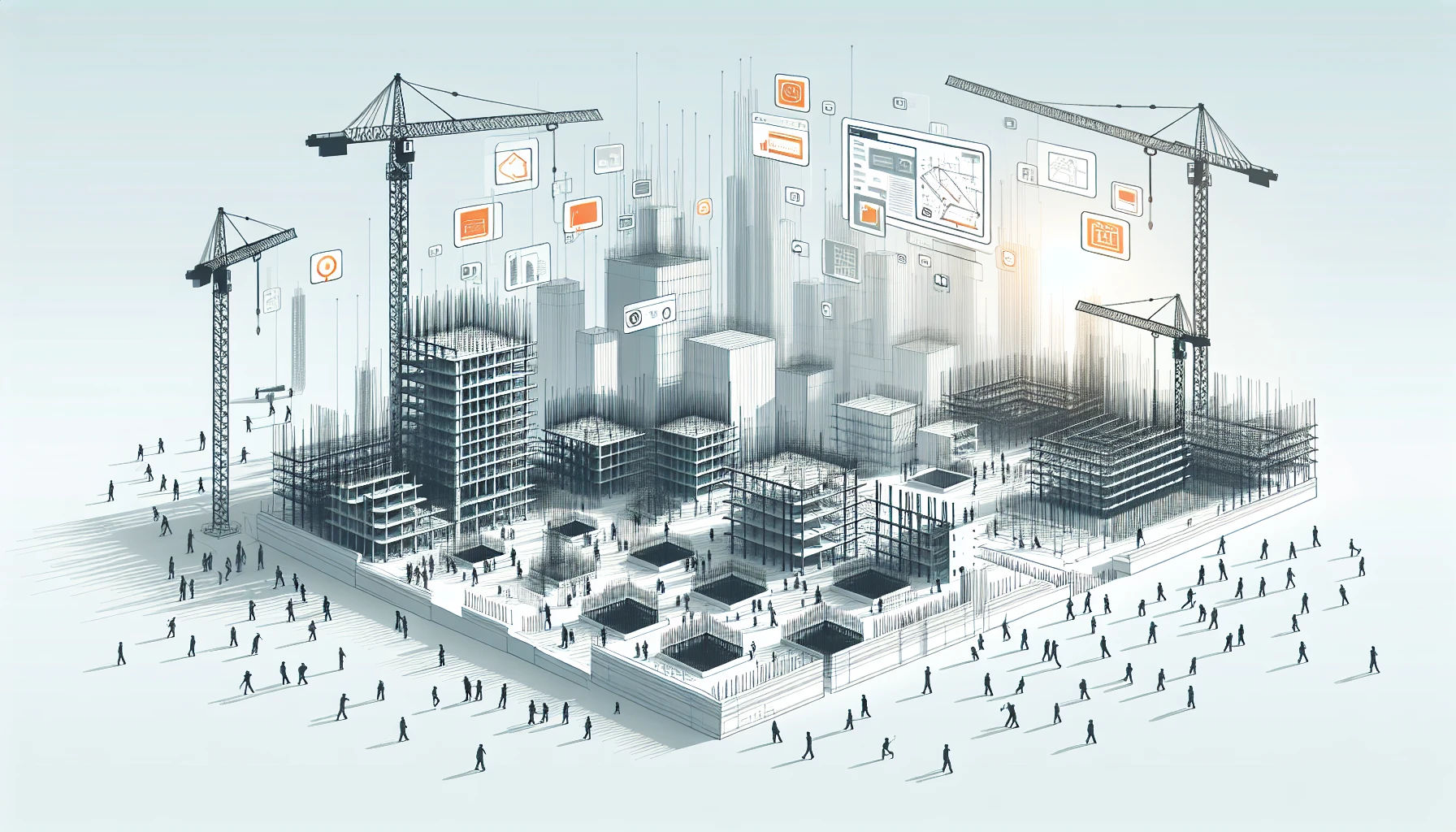
The early stages of construction set the tone for project success, and that’s where BIM comes into play big time. By integrating bim and construction management at this stage, we’re looking at fewer headaches and more high-fives down the line.
Virtual Modeling and Its Advantages
Virtual models, or digital twins, give everyone a crystal-clear picture of what’s being built before the real work starts. It’s like x-ray vision for your project, spotting potential issues before they become costly.
- Enhanced visualization for better planning and communication
- Avoidance of costly design errors
- Precise simulations for materials and construction processes
Design efficiency skyrockets with BIM because it gets architects, engineers, and contractors on the same page early. Kinks are ironed out before they balloon into budget busters.
Impact of BIM on Design Efficiency
Remember when design changes meant redrawing plans and endless back-and-forth? With BIM, that’s ancient history. Changes are instant, everyone’s updated, and it’s a game-changer for teamwork.
Here’s the deal: BIM can slash construction costs by up to 20%. That’s a chunk of your budget staying firmly in your pocket.
Why should you care about a list of popular BIM software? Because each percentage point represents heaps of time and errors saved. And that’s crucial for nailing bim risk management. Take Revit, for example, which is preferred by 46%—it’s a powerhouse for efficiency.
And when it comes to BIM during design and preconstruction, it’s not just smart—it’s a strategic power move. Pair it with tools like SmartBarrel’s construction time tracking software for a winning combo.
Leveraging BIM for Enhanced Construction Execution
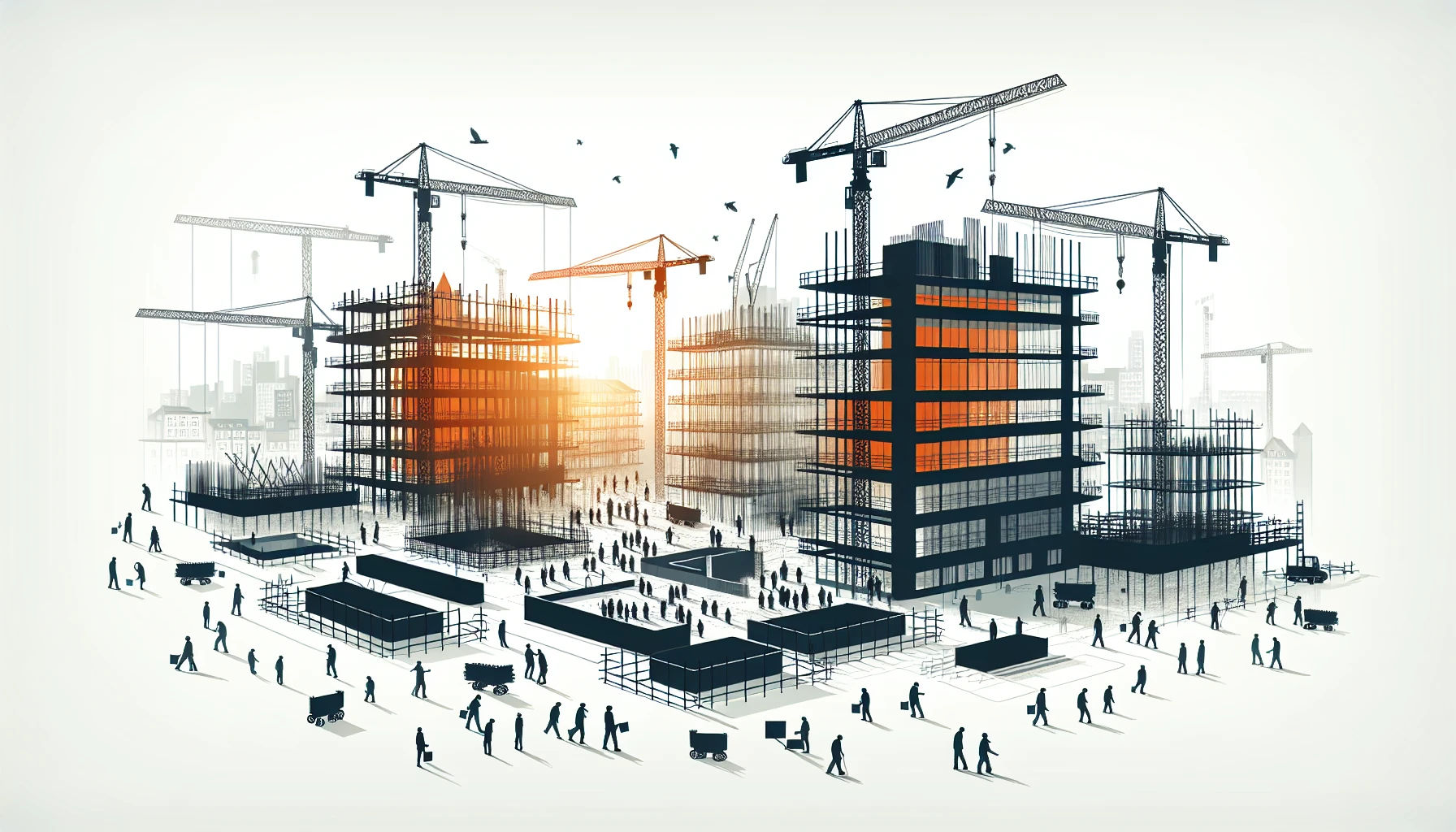
When the planning phase is over, and it’s time to get to work, bim and construction management shines. It’s all about turning those digital blueprints into the buildings and bridges we see every day.
Construction Simulations for Safety and Efficiency
Construction sites can be a mess, but BIM helps put things in order. By planning out tasks in advance, teams can work smarter and safer—like a well-oiled machine. It helps prevent accidents and crush inefficiencies, and that’s a big deal.
- Visualizing complex procedures to minimize risks
- Walkthrough simulations get teams ready
- Spotting safety hazards before they cause trouble
Construction Dive reports that “27% of architects and GC/CMs saw improved overall project safety as a result of using BIM”. Those are the kind of numbers that make you want to pay attention.
BIM’s Role in On-Site Coordination and Communication
It’s one thing to move earth and pour concrete; it’s another to keep everyone in sync while doing it. BIM is the glue that keeps different trades working together smoothly. You get fewer mix-ups, fewer delays, and way less blame shifting when things get a bit rocky.
Thanks to real-time updates, everyone from foremen to subcontractors stays on the same page. BIM helps ditch miscommunication for good. And when BIM is paired with tools like SmartBarrel’s safety tracking, your job site stays efficient and safe.
The use of bim in construction is not just tech fluff—it’s critical for nailing complex projects without a hitch. In construction, time is your gold, and BIM is like striking a rich vein.
Here’s the real scoop: nearly half of all construction companies are betting on BIM. It’s not just some fad; it’s becoming the industry norm.
| U.S. share of construction companies with BIM strategies 2018 |
|---|
| Outsource BIM entirely: 9.5% |
| No BIM strategy: 14.5% |
| BIM strategy in development: 26.5% |
| BIM strategy implemented: 49.5% |
Being clued in to what’s coming makes all the difference, and with a hefty chunk of companies implementing BIM, it’s clear that this is the way forward.
BIM for Subcontractor Management and Coordination
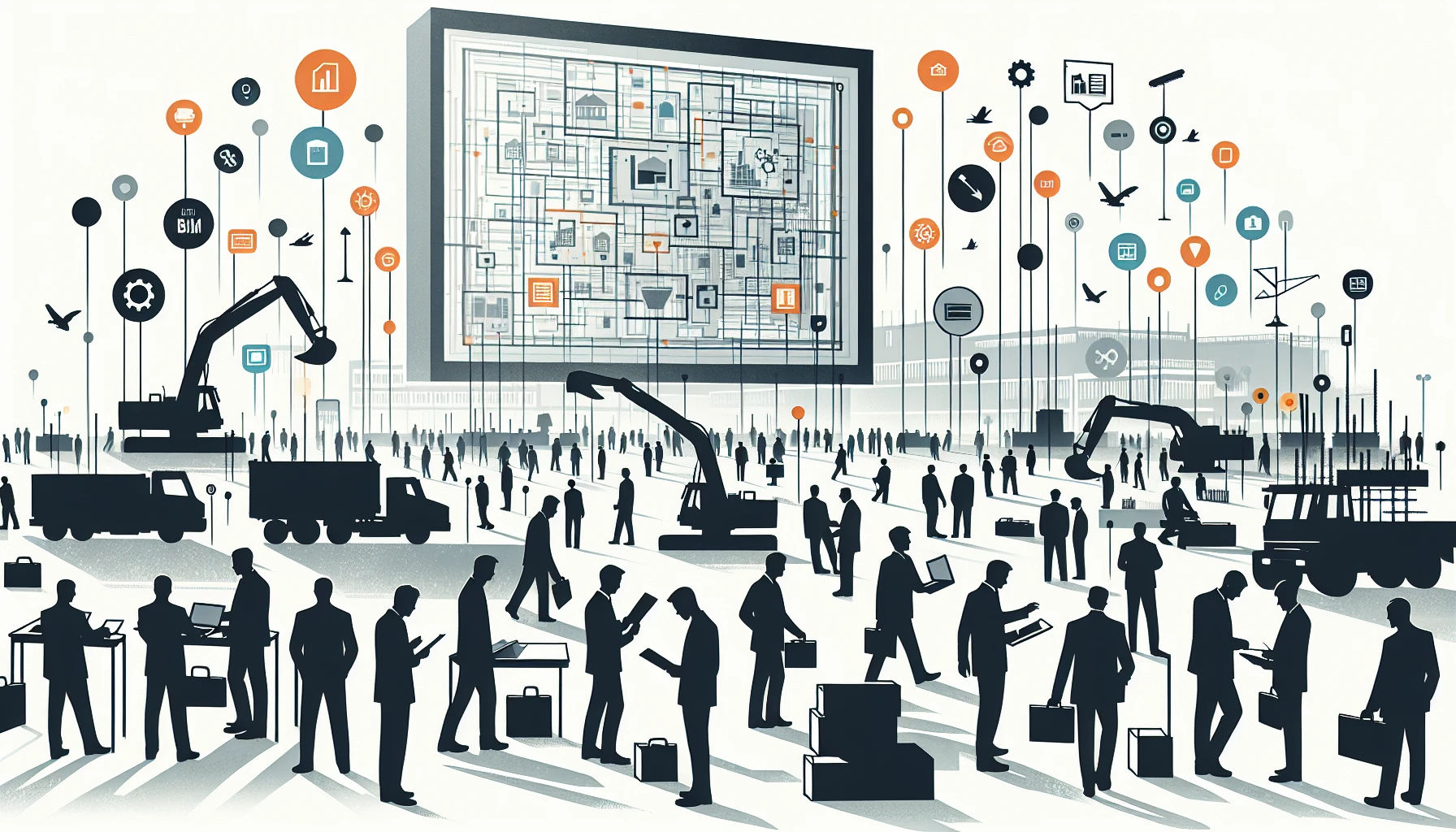
Now, let’s get real about subcontractors. Without a solid handle on them, your project’s going nowhere fast. BIM steps in to make sense of the madness with crystal-clear coordination that keeps everyone on track.
Digital Project Sequencing and Its Benefits
Imagine BIM as your subcontractor whisperer. It’s about setting the stage so each player knows their cues. We’re talking less downtime, zero confusion about who’s doing what, and the agility to pivot when things go sideways. Here’s the deal:
- It nails down scheduling to prevent trades from tripping over each other
- Tasks are assigned with laser precision, so everyone’s accountable
- Updates in real-time mean you can dodge problems on the fly
By syncing bim and construction management, you’re conducting a masterpiece where every subcontractor hits their mark, no sweat.
Enhancing Subcontractor Compliance and Performance
With BIM, it’s tough for subcontractors to play fast and loose. They’ve got a crystal-clear playbook—specifications, standards, the whole shebang. This means performance levels go from ‘meh’ to ‘nailed it.’ Here’s the scoop:
- It’s like a hall monitor for project standards with detailed models
- Quality checks are built-in, so there’s no room for shenanigans
- A feedback loop keeps everyone on their toes, ironing out kinks as they go
And yeah, with tools like SmartBarrel’s construction site access control, you’re adding another layer of security to keep the wrong people from wandering in.
Bottom line? Wrangling subcontractors with bim and construction management is the smart play. It’s not just about managing risk; it’s about elevating how the whole team dances together. Throw in bim risk management, and you’ve got yourself a project that’s smooth sailing with fewer headaches.
Financial Oversight with BIM: Tracking Costs and Budgets
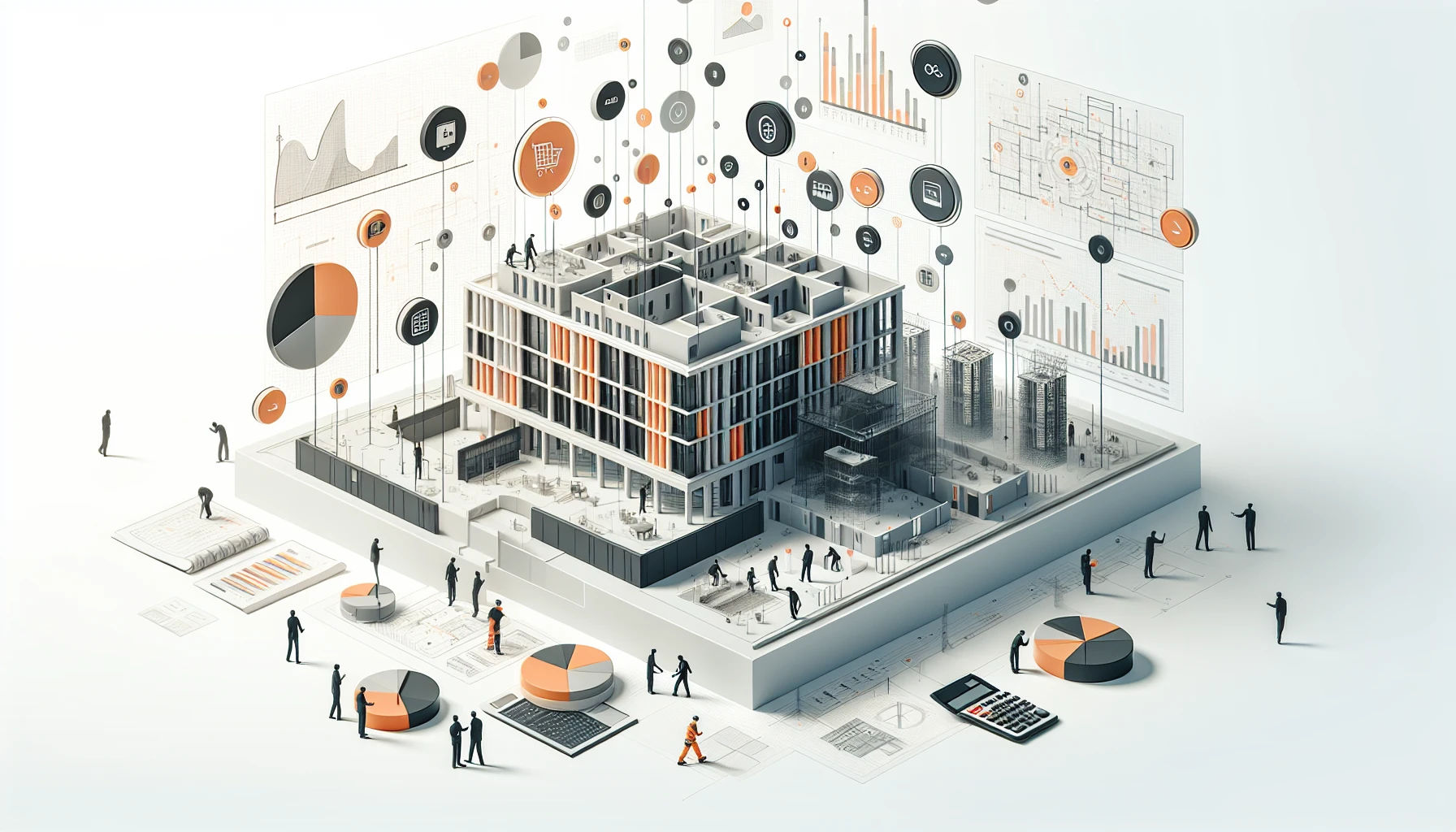
Money talks. In construction, keeping a tight rein on costs means bim and construction management are your financial BFFs. Let’s dive into how BIM is a game-changer for smart budgeting.
5D BIM for Cost Monitoring and Forecasting
5D BIM is the crystal ball of construction finances, giving you the power to see and manage your money with killer precision. It’s all about adding the cost dimension to your 3D models and timelines. Here’s what this magic includes:
- Real-time tracking of material and labor costs against the budget
- Automated cost estimation when you tweak the design or scope
- Predictive analytics that help you make smarter money moves
Pair this with construction cost tracking tools for that extra edge in stopping budget blowouts cold.
Improving Cost Efficiency with BIM
When it comes to cutting costs, the use of bim in construction is like a ninja, slashing unnecessary spending without breaking a sweat. Here’s the deal:
- Less need for “just in case” money because you’ve got planning down to an art
- Reduced waste and smarter use of resources
- Iron-fisted control over the supply chain with integrated data
And here’s a number to chew on: BIM can slash construction project costs by a whopping up to 20%. That’s a chunk of change that can seriously beef up your bottom line.
Bottom line? If you’re not using bim and construction management for financial oversight, you’re throwing money out the window. With 5D BIM and cost efficiency tactics, you’re not just building structures, you’re stacking cash.
BIM for Building Performance Analysis and Optimization
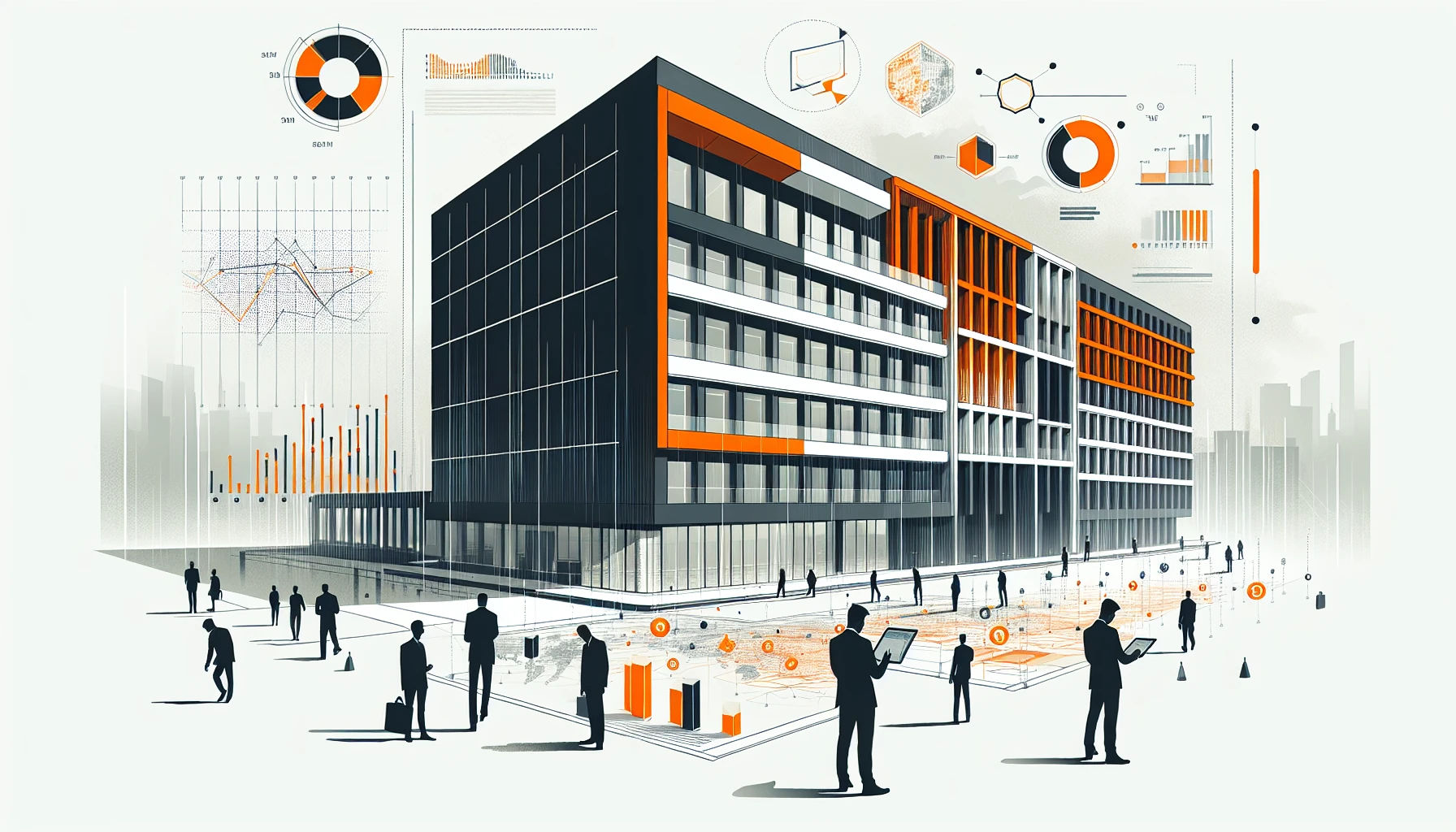
Beyond construction, bim and construction management play a pivotal role in performance analysis. It’s not just about buildings standing tall; they need to meet performance goals too. That’s where BIM steps in post-construction—to ensure buildings work as smart as they look.
Predictive Performance Simulations with BIM
Even before the first brick is laid, BIM allows us to get a sneak peek into the future of a building’s performance. Energy use, thermal comfort, and maintenance needs can all be simulated, providing a snapshot of future challenges and opportunities. These simulations are more than educated guesses; they’re informed by hard data, and here’s the kicker: they can lead to big savings.
- Daylighting simulations help harness natural light, slashing energy bills.
- HVAC analysis ensures comfy spaces without wasting energy.
- Proactive maintenance planning avoids financial surprises down the road.
For the specialty construction subcontractors out there, these insights are worth their weight in gold.
BIM’s Contribution to Sustainable Building Practices
Let’s talk sustainability—it’s not just for show, it’s for dough. Integrating bim and construction management means smarter, greener buildings and a healthier bottom line. Here’s the scoop:
- Choosing materials with the planet in mind cuts environmental impact and can save cash.
- Refined energy models lead to buildings that cost less to power.
- Getting green building certifications like LEED is a breeze with BIM’s detailed records.
Using BIM to boost sustainability isn’t just a feel-good move—it’s strategic. And for staying ahead in the game, it’s a smart play.
Bottom line: bim risk management and performance analysis are about making sure your project excels during its entire life cycle. Building it is one thing; ensuring it runs like a dream for years is where the real skill shows. And that’s what makes the difference in the competitive specialty construction subcontracting market.
Synchronizing Construction Tasks with Centralized BIM Models

A centralized BIM model is a game-changer in project execution, acting as the backbone for task synchronization. It ramps up stakeholder engagement and smooths out communication.
Centralized Digital Model for Enhanced Collaboration
A centralized BIM model tears down walls between project participants, fostering a collaborative environment. Here’s the deal:
- It’s the go-to for accurate project details
- It’s where everyone gets real-time updates
- It helps teams fix issues before they blow up
With everyone on the same page, you dodge misunderstandings and keep the team ticking like clockwork.
Streamlining Project Workflow with BIM
Inefficiencies can tank a project. That’s why smooth project workflow is crucial. Integrating BIM means tasks are synced up tight, data mix-ups are history, and rework gets slashed—everyone’s workload gets lighter. SmartBarrel’s daily log app meshes with BIM to keep data flowing, so your crew is clued in, always.
To wrap it up, a centralized BIM model isn’t a nice-to-have; it’s a must. It transforms your project into a well-oiled machine, zapping stress and boosting efficiency on the ground.
Generating Accurate Construction Documents with BIM
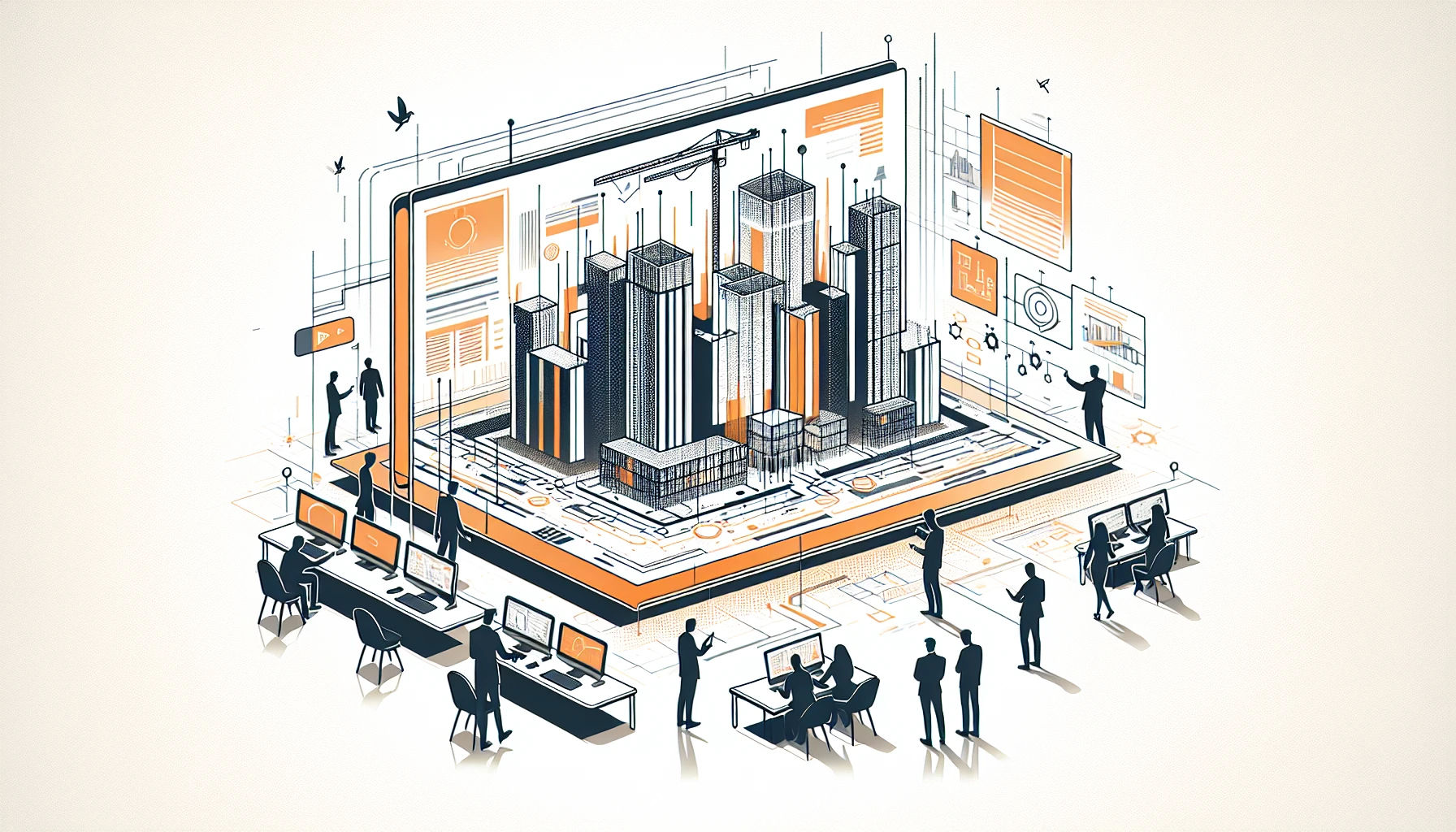
Introducing BIM into your construction document process is a game-changer. It ensures precision isn’t just an aim—it’s a standard. With BIM, you create and manage documents with ease, knowing that they’re on point, every time.
BIM takes the chaos out of document management. It provides an orderly, digital setup where everything is expertly crafted and stored. Say goodbye to the mess of paper and outdated files. With BIM, all your documents are current and within reach for everyone involved.
BIM’s Role in Document Creation and Management
Think of BIM as the master chef in the document creation kitchen. It dishes out accurate plans, sections, elevations, schedules, and manages them flawlessly over the project’s life. All your documents are baked to perfection, served up fresh, and they stay that way—that’s BIM’s magic.
- Centralizes document access to ease collaboration
- Automated cross-referencing slashes errors
- Version control keeps the whole team updated
Real-Time Updates and Document Accuracy
BIM demands precision for construction documents. Real-time updates are the norm, ensuring that when changes happen, they’re reflected instantly across all documents. This keeps everyone in sync, dodging the costly “old version” blunders.
By integrating bim and construction management, you sharpen document accuracy and keep them relevant from start to finish. BIM isn’t just for building structures; it’s for building legacies, with every detail documented flawlessly.
Want to ditch the paper chase and tighten up your projects? SmartBarrel’s time tracking solutions are the perfect match for your BIM strategy, solidifying your documentation as well as your foundation. Get on board now and leave outdated management in the dust.
Streamlining Material Estimation with BIM Quantity Takeoffs
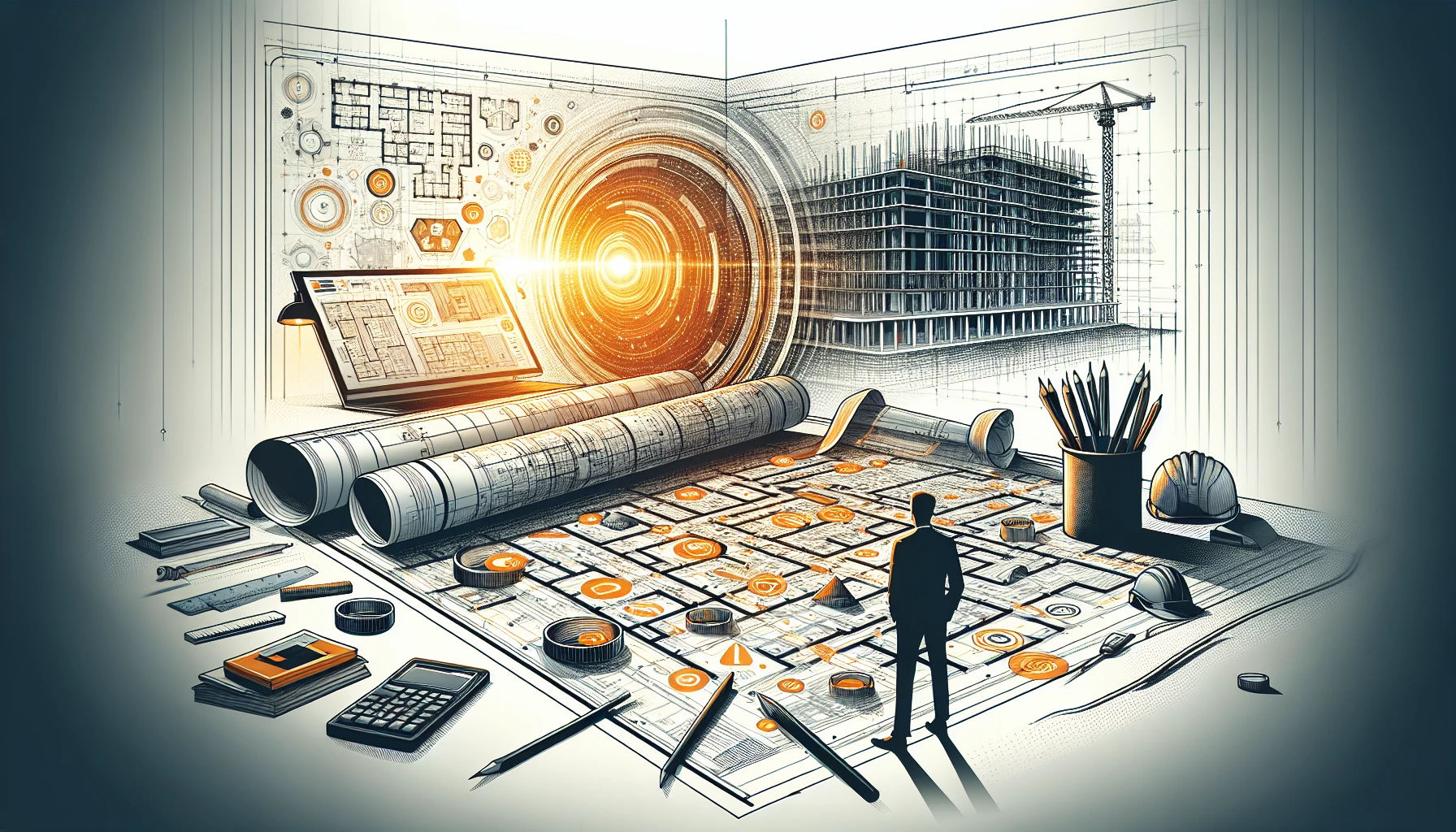
Bim and construction management aren’t just about sketching out a plan—they’re about nailing the details, like material estimation. Thanks to BIM’s quantity takeoff magic, you can chuck out those wild guesses and welcome pinpoint precision into your procurement strategy.
BIM for Accurate Bill of Materials Generation
BIM is shaking up bill of materials generation like nobody’s business. Throw detailed designs into the BIM machine, and out pops an automated, dead-on list of what you need for your build. It’s a no-brainer that slashes waste, kicks purchase orders into high gear, and makes budgeting a breeze:
- Eliminates the guesswork with spot-on material calculations
- Accelerates procurement with speedy, accurate cost estimates
- Keeps your budget on track and your storage costs down
Picture a system that spits out a full bill of materials faster than your coffee order—welcome to the use of bim in construction.
Enhancing Procurement Efficiency with BIM
In procurement, timing and precision are the kings. BIM integration means you order materials right when you need them, to the letter, slashing the risks of project hiccups and wasted resources. Here’s the real deal with BIM:
- Syncs up buying time with your project’s heartbeat, guaranteeing on-the-dot deliveries
- Boosts vendor talks with crystal-clear material details
- Gives you the lowdown on material trends for smarter future buys
Plus, tools like construction manpower tracking mesh with BIM to ensure your crew is as dialed in as your materials.
Let’s cut to the chase: blending bim and construction management into material estimation is a no-brainer for the win. BIM’s knack for nailing bill of materials and procurement finesse means less time wasted, more money saved, and way fewer migraines. It’s time to gear up with these tools and steer your projects to success town.
Ensuring Quality Assurance with BIM Model Verification
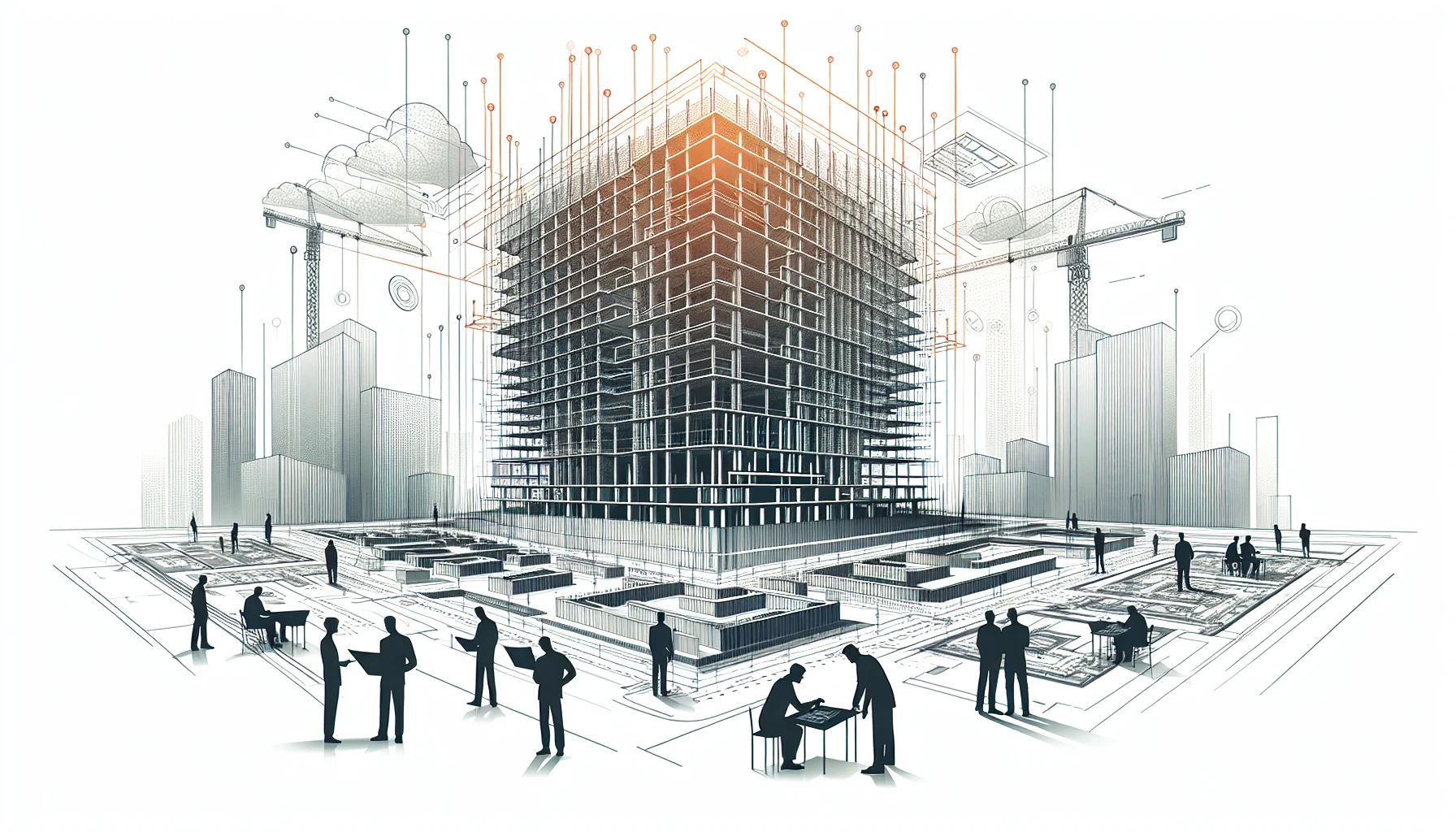
Quality assurance in construction isn’t just about ticking boxes; it’s about ensuring the final structure stands strong and true to its design. That’s where bim and construction management come into play, particularly through rigorous BIM model verification processes.
Techniques for Comparing BIM Models with Actual Construction
To guarantee that a building meets its intended specifications, comparing the BIM model against the actual construction is crucial. This involves laser scanning completed structures and overlaying them onto the original BIM models. By doing this, project teams can identify discrepancies early on, avoiding costly rework and ensuring consistent quality. For instance, over a third of owners and contractors report more than a 5% reduction in reportable incidents due to this practice.
- Laser scanning and point cloud data for precision comparison
- Overlaying as-built conditions over BIM models to spot variances
- Using mobile devices on-site to cross-reference real-time progress
BIM’s Role in Quality Assurance and Compliance
bim risk management extends beyond preventing scheduling conflicts and budget blowouts—it’s also about maintaining the highest standards of quality and compliance. With BIM’s detailed models serving as a benchmark, construction managers can enforce strict adherence to design intent and regulatory requirements throughout the build process.
BIM facilitates a continuous feedback loop where quality checks are documented, issues are addressed, and improvements are made in real-time—ensuring project compliance every step of the way. As a result, BIM not only supports quality assurance but enforces a culture of excellence across construction projects.
- Real-time discrepancy detection for immediate correction
- Documented quality checks within the BIM environment
- Rigorous adherence to codes and standards for project compliance
Integrating model verification and quality assurance practices into your bim and construction management strategy is not an option—it’s critical. It ensures the physical build matches the digital blueprint, reinforcing your reputation for delivering top-notch, compliant constructions.
Virtual Reality Simulations Derived from BIM for Planning and Safety
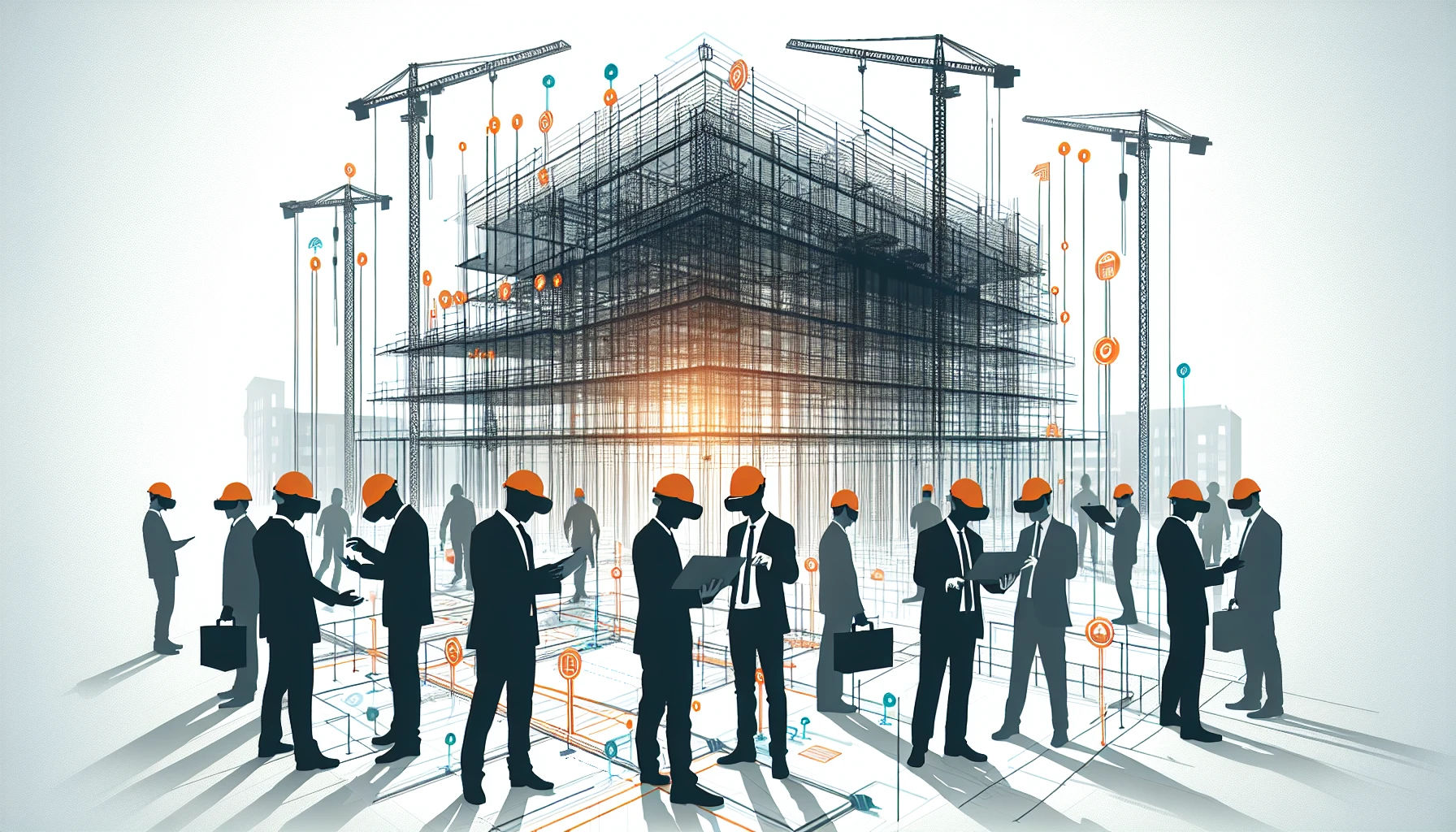
Forget the gimmicks—VR teamed with bim and construction management is the real deal. By experiencing a build virtually before it’s even built, teams can spot issues early and plan like pros. This isn’t just improving workflows; it’s transforming how we tackle project safety.
Immersive Planning with BIM-Generated VR Models
Strap on a headset and take a stroll through your future project. VR models born from BIM are all about diving deep into your project, making it easier to see and solve problems before they’re real. It’s interactive, it’s insightful, and it’s changing the use of bim in construction.
- Inspect virtually for smarter design choices.
- Get everyone on board faster with hands-on model interaction.
- Spot clashes without consequences, way before they’re costly.
Identifying Safety Hazards with VR Simulations
VR isn’t just for kicks—it’s a safety powerhouse. Workers can get a feel for the dangers they’ll face, but without any of the risk. This isn’t hypothetical; it’s hands-on training that sticks and slashes accident rates.
- Train for the unexpected with real as it gets scenarios.
- See and dodge hazards in the virtual world first.
- Remember the drills because they felt real, not because they were risky.
Here’s the bottom line: bim and construction management are about more than just juggling resources. They’re your best bet for keeping everyone safe. And when you mix that with tools like SmartBarrel’s safety tracking, you’re not just building—you’re building smart. Using VR for bim risk management is not just some future dream; it’s happening, and it’s a game-changer.
Embracing the Future: BIM’s Indispensable Role in Construction Management
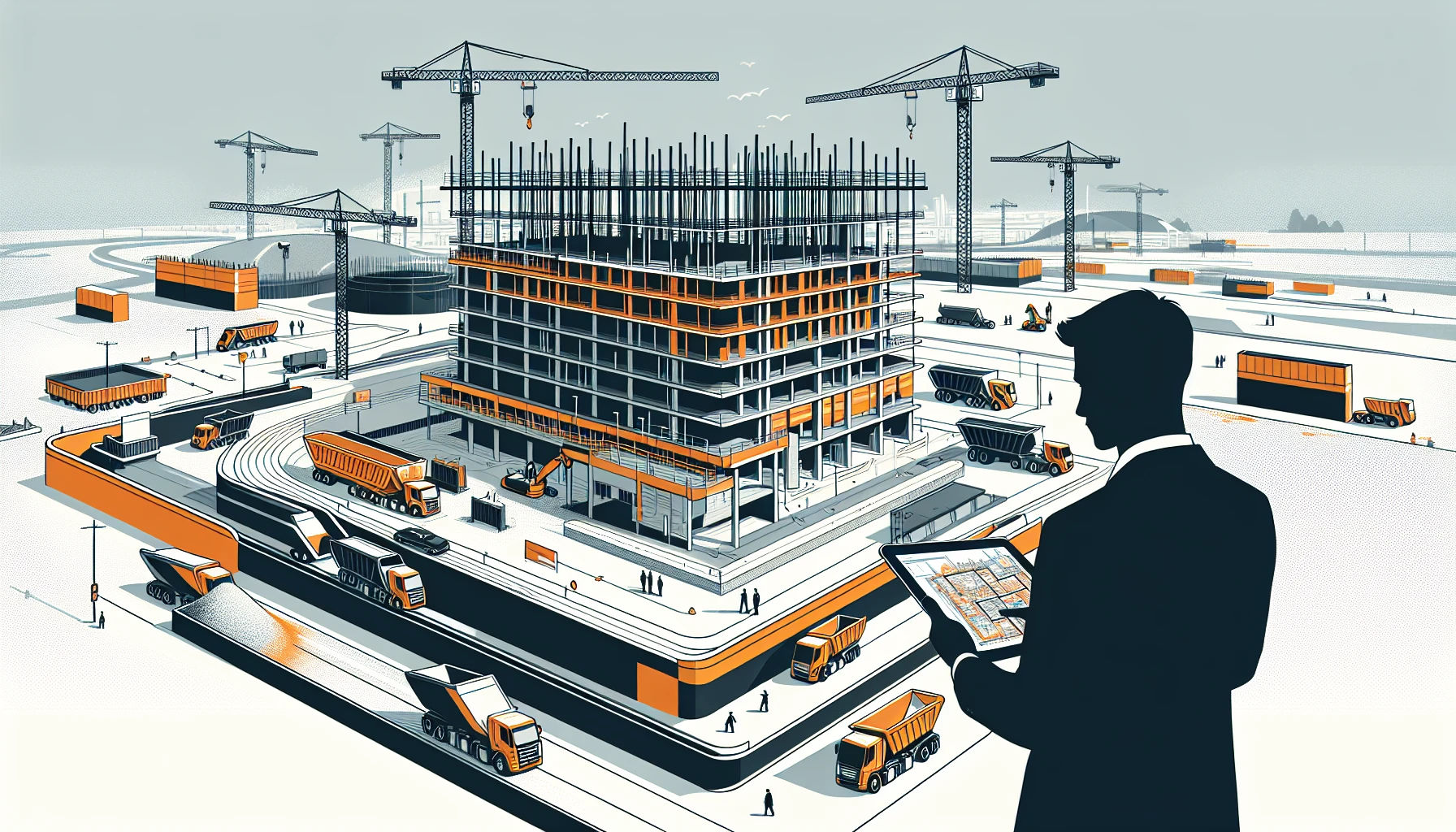
Let’s cut to the chase: bim and construction management are a power couple in the construction world. We’ve seen how BIM slingshots projects from the starting line to the finish ribbon—without it, you’re missing out big time.
With BIM, you’re not just shaving off up to 20% of your costs; you’re also joining the ranks of the nearly half of U.S. construction companies already crushing it with BIM. If you’re not in this group, you’re in the dust.
- With visualization, BIM turns blueprints into dynamic models that pop.
- It sharpens execution and coordination, keeping projects on the rails and budgets intact.
- Material estimation gets a boost in precision, slashing waste and time.
SmartBarrel’s AI and biometric tech are the perfect sidekicks to BIM’s muscle, tackling the unique hurdles of specialty construction subcontracting.
Here’s the bottom line: Sync up bim and construction management or lag behind. For pros gunning for the top, BIM isn’t just a smart choice—it’s the backbone of building smarter, safer, and greener.
Ready to step up your game? Don’t sit around waiting for the future to hit you. Grab the reins with SmartBarrel and supercharge your construction management with BIM. It’s your move to slash the headaches and craft a legacy that’ll stick. Touch base with us to dive into our solutions that save you time and dough.

